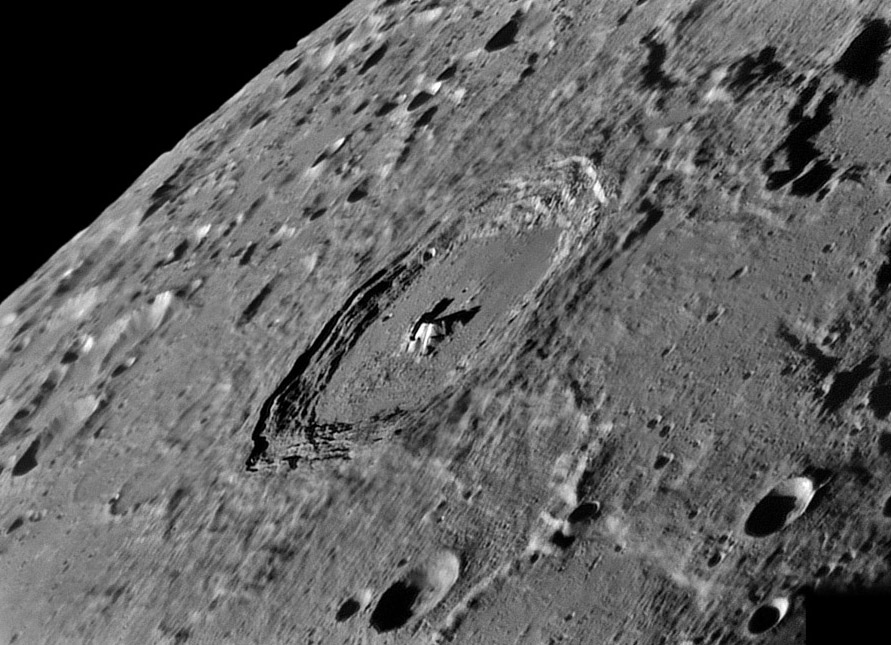Difference between revisions of "November 23, 2011"
| Line 1: | Line 1: | ||
__NOTOC__ | __NOTOC__ | ||
=The Northern Copernicus= | =The Northern Copernicus= | ||
| − | |||
<!-- ws:start:WikiTextHeadingRule:0:<h1> --> | <!-- ws:start:WikiTextHeadingRule:0:<h1> --> | ||
<!-- ws:start:WikiTextLocalImageRule:6:<img src="/file/view/LPOD-Nov23-11.jpg/278447536/LPOD-Nov23-11.jpg" alt="" title="" /> -->[[File:LPOD-Nov23-11.jpg|LPOD-Nov23-11.jpg]]<!-- ws:end:WikiTextLocalImageRule:6 --><br /> | <!-- ws:start:WikiTextLocalImageRule:6:<img src="/file/view/LPOD-Nov23-11.jpg/278447536/LPOD-Nov23-11.jpg" alt="" title="" /> -->[[File:LPOD-Nov23-11.jpg|LPOD-Nov23-11.jpg]]<!-- ws:end:WikiTextLocalImageRule:6 --><br /> | ||
| − | <em>image by [mailto:dpeach_78@yahoo.co.uk Damian Peach]</em><br /> | + | <em>image by [mailto:dpeach_78@yahoo.co.uk" rel="nofollow Damian Peach]</em><br /> |
<br /> | <br /> | ||
If the Moon were rotated 65° toward the south, Pythagoras would replace Copernicus as the most impressive visible crater. It is 50% larger than Copernicus, but not as young, its rays are much fainter. Like Copernicus, Pythagoras has two main mountainous peaks that are not quite centered. The broad floor, partly covered with debris, and the staircase of terraces add to the similarities with Copernicus. Like Hausen near the south pole, Pythagoras provides an oblique view of what large fresh complex craters really look like. <br /> | If the Moon were rotated 65° toward the south, Pythagoras would replace Copernicus as the most impressive visible crater. It is 50% larger than Copernicus, but not as young, its rays are much fainter. Like Copernicus, Pythagoras has two main mountainous peaks that are not quite centered. The broad floor, partly covered with debris, and the staircase of terraces add to the similarities with Copernicus. Like Hausen near the south pole, Pythagoras provides an oblique view of what large fresh complex craters really look like. <br /> | ||
<br /> | <br /> | ||
| − | <em>[mailto:tychocrater@yahoo.com Chuck Wood]</em><br /> | + | <em>[mailto:tychocrater@yahoo.com" rel="nofollow Chuck Wood]</em><br /> |
<br /> | <br /> | ||
<strong>Technical Details</strong><br /> | <strong>Technical Details</strong><br /> | ||
| Line 15: | Line 14: | ||
<strong>Related Links</strong><br /> | <strong>Related Links</strong><br /> | ||
Rükl plate [http://the-moon.wikispaces.com/R%C3%BCkl+2 2]<br /> | Rükl plate [http://the-moon.wikispaces.com/R%C3%BCkl+2 2]<br /> | ||
| − | Damian's [http://www.damianpeach.com/ website]<br /> | + | Damian's [http://www.damianpeach.com/" rel="nofollow website]<br /> |
<br /> | <br /> | ||
<hr /> | <hr /> | ||
Revision as of 22:24, 4 January 2015
The Northern Copernicus

image by " rel="nofollow Damian Peach
If the Moon were rotated 65° toward the south, Pythagoras would replace Copernicus as the most impressive visible crater. It is 50% larger than Copernicus, but not as young, its rays are much fainter. Like Copernicus, Pythagoras has two main mountainous peaks that are not quite centered. The broad floor, partly covered with debris, and the staircase of terraces add to the similarities with Copernicus. Like Hausen near the south pole, Pythagoras provides an oblique view of what large fresh complex craters really look like.
" rel="nofollow Chuck Wood
Technical Details
Sept 22, 2011.
Related Links
Rükl plate 2
Damian's " rel="nofollow website



